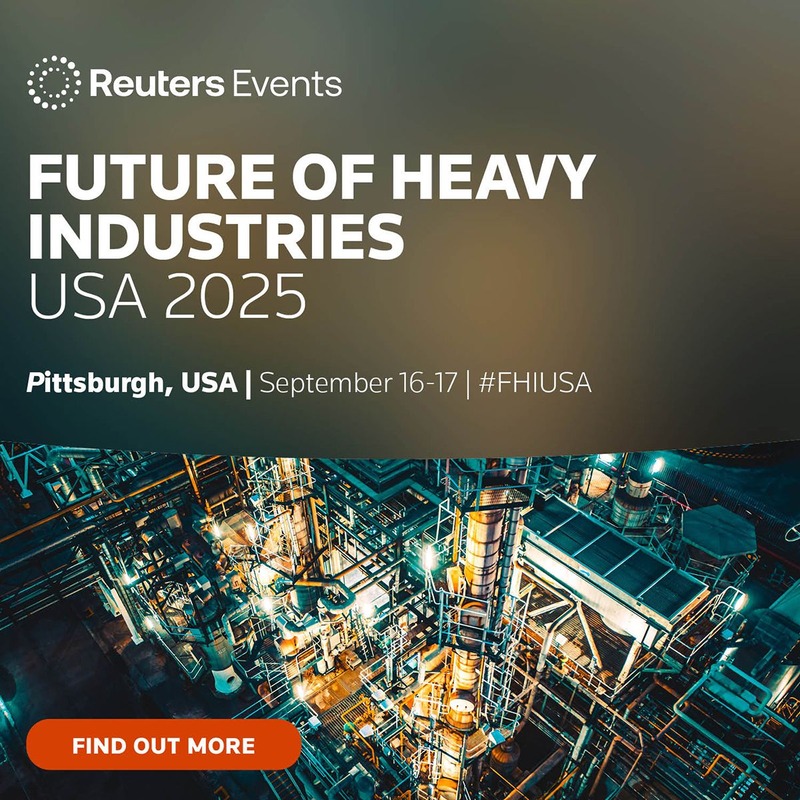Welcome to Climate Tech Pulse, your daily dose of market intelligence helping fuel the fight against climate change. From groundbreaking investments to cutting-edge research, we’re bringing you the latest in climate tech that’s shaping our future.
Don’t miss out on tomorrow’s climate solutions – subscribe now to stay ahead of the curve! https://lnkd.in/dwr7B9XJ
Today’s newsletter:

🔝Today’s Top Story: JLR is investing £500 million to overhaul its 61-year-old Halewood facility, adapting it for the production of electric vehicles (EVs).
📊 Today’s Data Point: UN Report – $1.4 Trillion Pledged for Energy Transition by 2030.
🌳 Climate Insider Intelligence: SAP’s Strategic Shift Towards Net-Zero – a Deep Dive into the Future of Corporate Sustainability.
JLR Transforms Historic Halewood Factory into Cutting-Edge EV Hub with £500M Investment
Image Credit: JLR
Halewood’s £500M Transformation for Electric Future
JLR is investing £500 million to overhaul its 61-year-old Halewood facility, adapting it for the production of electric vehicles (EVs). This transformation includes the installation of cutting-edge technology such as autonomous robots, EV build lines, and cloud-based management systems. The revamped site will manufacture internal combustion, hybrid, and electric vehicles in parallel, with the aim to make Halewood JLR’s first all-electric production plant.
Sustainability & Carbon Reduction Initiatives
Aligned with JLR’s Reimagine strategy and its goal to achieve carbon net zero by 2039, the Halewood facility will embrace sustainability through renewable energy sources, fuel switching, and energy efficiency upgrades. Plans to install 18,000 solar panels, alongside other measures, are expected to cut 40,000 tonnes of CO2e from the site’s footprint.
Upskilling for Electrification and Advanced Technology
JLR is investing £20 million annually in its Future Skills Programme to train employees in new technologies essential for EV production. Halewood’s new training center focuses on High Voltage Training (HVT) for battery assembly, with over 1,600 employees already trained. The site also introduces advanced ADAS calibration rigs to support next-generation autonomous driving technologies. Read More
Quote of the Day
“Halewood has been the heart and soul of JLR in the Northwest of England for well over two decades, producing vehicles such as the Range Rover Evoque and Discovery Sport. Halewood will be our first all‑electric production facility, and it is a testament to the brilliant efforts by our teams and suppliers who have worked together to equip the plant with the technology needed to deliver our world class luxury electric vehicles,” said Barbara Bergmeier, Executive Director, Industrial Operations.
Significance: The quote highlights Halewood’s long standing role as a key production hub for JLR, underscoring its importance in manufacturing iconic vehicles like the Range Rover Evoque and Discovery Sport.
Transition to Electrification: It signifies the plant’s transformation from traditional vehicle production to becoming JLR’s first all-electric facility, a major milestone in the company’s electrification strategy.
Team Effort and Innovation: The mention of teamwork and supplier collaboration reflects the extensive coordination and innovation required to retool the plant with cutting-edge technology for EV production.
Commitment to Luxury EVs: By emphasizing “world-class luxury electric vehicles,” the quote reaffirms JLR’s commitment to maintaining its premium positioning as it transitions to electric mobility.
Market Movers
- Cyclic Materials, a Toronto-based cleantech firm advancing circular supply chains for rare earth elements and critical materials vital to the clean energy transition, raised $53M in Series B funding led by ArcTern Ventures, with the investment set to scale its sustainable recycling technology for supporting industries like electric vehicles and wind energy. Read More
- Two Point O Capital, a climate financing platform focused on clean energy projects, raised $6.3M in seed funding led by Omnivore, which will be used to enhance its tech-enabled platform for sourcing, underwriting, and financing distributed projects in sectors like solar rooftops, energy efficiency, and wastewater treatment. Read More
- The Change Climate Project (TCCP) launched its 2025 certification Standard and The Climate Label at Climate Week NYC, evolving its Climate Neutral Certified program to demand greater corporate climate action by centering climate-transition funding and allowing certified companies to use the label for third-party validation of their efforts, aiming to accelerate corporate climate investment to meet the urgency of the crisis. Read More
Tech Spotlight
Innovative Two-Stage Catalytic Membrane Reactor for CO2 and CH4 Conversion
Image Credit: Jinkun Tan, et al.
Source: Nanjing Tech University, published in Green Energy & Environment
Researchers led by Wanqin Jin from Nanjing Tech University have developed a groundbreaking two-stage catalytic membrane reactor that utilizes solar irradiation and asymmetric oxygen-permeable perovskite membranes. This novel reactor simultaneously converts CO2 and CH4 into valuable syngas while addressing significant challenges associated with the kinetic stability and thermodynamic limitations of these greenhouse gases.
Commercial Viability
Performance Metrics:
The innovative reactor achieves a notable CO2 conversion rate of 35.4% and a hydrogen yield of 18.1 mL min⁻¹ cm⁻², surpassing the efficiencies of traditional fixed-bed reactors and catalytic membrane reactors lacking solar assistance. These metrics demonstrate a 62-fold and 1.5-fold improvement, respectively.
Cost-Effectiveness:
While the initial energy input requirements remain significant, the reactor’s ability to produce syngas—an essential feedstock for various chemicals—presents a compelling economic incentive for industries seeking to reduce carbon footprints and enhance resource efficiency.
Technical Viability
Innovative Goals:
The dual functionality of the reactor combines oxygen separation and heterogeneous catalytic reactions in a single unit, optimizing the conversion process. The extraction of oxygen generated from CO2 splitting occurs with 100% selectivity through the membrane, facilitating solar-assisted methane combustion and reforming.
Data Integration:
The reactor’s design allows for flexibility in selecting membrane configurations, such as disk and hollow fiber shapes. This adaptability enables the coupling of diverse chemical reactions or processes on either side of the hollow fiber membrane, accommodating different operating temperatures and pressures.
Environmental Viability
Sustainable Energy Development:
The reactor presents a strategic approach to utilizing CO2 and CH4 as feedstocks for value-added chemicals, significantly reducing greenhouse gas emissions. The integration of solar irradiation enhances the sustainability of the conversion process, aligning with global climate mitigation goals.
Climate Alignment:
By providing a viable method to convert greenhouse gases into useful products, this technology not only contributes to lowering emissions but also offers a pathway for industries to align with stringent sustainability objectives.
Scaling Potential
Commercialization Pathways:
The innovative reactor design facilitates broader applications across various industrial sectors. Its capacity to operate under differing conditions makes it suitable for a range of chemical processes, potentially accelerating the adoption of greener technologies in manufacturing.
Investment and Growth:
As industries increasingly seek to mitigate their carbon footprints, the financial and operational benefits of this reactor could stimulate investments in advanced catalytic technologies, paving the way for sustainable industrial practices.
Long-Term Implications
Transformative Impact on Emission Reduction:
This two-stage catalytic membrane reactor could redefine how industries approach the conversion of CO2 and CH4, making significant strides in reducing their carbon footprints and contributing to global decarbonization efforts.
Future Prospects:
As research and development continue to advance this technology, the potential for scaling its application across diverse sectors grows, promising significant environmental benefits and supporting global initiatives to combat climate change. Read More
Policy Pulse
This section includes global updates on climate change policy, governance and regulation.
Guidance published to help tackle GHG emissions in the environment and engineering sectors.
The recent resource published by Pledge to Net Zero underscores the urgent need for environmental and engineering professionals to accurately estimate greenhouse gas emissions in their designs, addressing a significant oversight in current Science Based Targets and highlighting the critical role of the buildings and construction sector, which accounts for 37% of global emissions.
Why it Matters: This initiative is crucial because accurately estimating and addressing the greenhouse gas emissions from design and construction practices can significantly contribute to global efforts in achieving net-zero targets and mitigating climate change impacts. Read More
Today’s Climate Data Point
UN Report: $1.4 Trillion Pledged for Energy Transition by 2030
Source: UN-Energy (2024)
The latest Energy Compacts Annual Progress Report reveals that new commitments to enhance renewable energy access and improve electricity and clean cooking technologies have driven financial pledges for the energy transition to a total of $1.4 trillion. This report was unveiled during the EnergyNow SDG7 Action Forum held on the sidelines of the UN General Assembly.
Key Findings:
- Investment Overview:
The report highlights an urgent need to address the energy needs of 685 million people lacking electricity and over 2 billion still relying on polluting cooking fuels. These commitments aim to set the world on a path towards net-zero emissions by 2050. - Progress and Challenges:
Although some progress has been made towards achieving Sustainable Development Goal (SDG) 7 (Affordable and Clean Energy), the report indicates that the pace is insufficient. For the first time in decades, the number of people without electricity has increased, emphasizing the need for greater action. - Future Investment Needs:
Achieving SDG 7 is critical for limiting global warming to 1.5°C and necessitates an additional $23-48 trillion in investments between 2021 and 2030 for a successful clean energy transition. - Results from Energy Compacts:
Since their inception in 2021, 209 commitments have been registered under the Energy Compacts, with 177 million people gaining new or improved electricity connections—though this still falls short of the 66 million needed annually to reach universal access by 2030.
Implications:
- Sustainable Energy Vision:
The leadership of UN-Energy emphasizes the collective ability to drive impactful change through united efforts. However, they stress that ongoing challenges must be addressed to realize the vision of sustainable energy for all. - Call to Action:
The report urges national governments, regions, cities, private companies, and civil society to make their own Energy Compact commitments, underscoring the importance of collaboration in scaling efforts.
Conclusion:
The Energy Compacts Annual Progress Report serves as a catalyst for renewed commitment and action in the energy sector. Without significant additional efforts and investments, the goals of universal energy access and net-zero emissions remain at risk. Read More
Climate Insider Intelligence: SAP’s Strategic Shift Towards Net-Zero – a Deep Dive into the Future of Corporate Sustainability
Image Credit: SAP
As global enterprises gear up for a sustainable future, SAP is setting the standard with its bold new strategy for 2024. Having already achieved carbon neutrality, the tech giant is now laser-focused on targeted emissions reductions across its operations and supply chain. With a commitment to planting 21 million trees by 2025 and protecting vital ecosystems, SAP is proving that corporate responsibility can drive meaningful climate action.Dive into Climate Insider’s latest article to discover how SAP is reshaping the sustainability landscape—and why its innovative approach might just inspire a wave of corporate climate action worldwide! Read More








